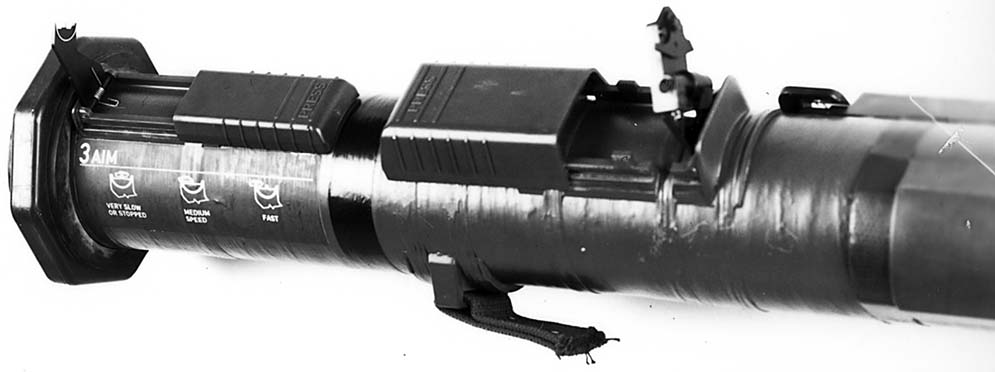By Christopher Trumble
There have been a number of expended AT-4 launchers sold at Army surplus stores and gun shows to people that have an interest in having an instant conversation piece. For those that have one and do not know anything about their history and use, here are some bits of trivia that you can rattle off.
The AT-4 is a lightweight improved version of the M72 series of light anti-armor weapons that were designed in the early 1960’s. It was determined that there was a requirement for a more powerful version of the 66mm M72. In the late 1980’s the AT-4 was designed and manufactured by Bofors of Sweden (formerly FFV) for use against the improved armor of the current light armored vehicles. In the United States it is commonly referred to as the M136 and manufactured by Alliant Techsystems Incorporated in Minnesota. It is in service with the U.S. Army, Navy, Airforce and Marine Corps.

The primary components of the weapon are the barrel, muzzle cover, firing mechanism, the sights and the projectile. The barrel is a composite glassfibre reinforced plastic that has an aluminum venturi at the exhaust end. The muzzle cover is rubber and acts as a shock absorber. The firing mechanism is a simple spring-loaded bolt-like device that is pushed forward until it locks in place, readying it for firing. The adjustable sights are simple and rugged, utilizing spring loaded polymer panels factory preset to 200 meters, that are stored beneath sliding polymer covers that are meant to protect the sights during transport and storage. The projectile is what is referred to as an 84mm HEAT (High Explosive Anti-Tank) round.
The 84mm HEAT round is composed of a cartridge case and the HEAT shell. The HEAT shell has four primary components, these being the fin assembly, base fuse, stand-off cap and HMX/TNT hollow charge. Upon discharging the HEAT round, the fins open to stabilize the rocket in flight. The fuse is constructed with an out-of-line detonator safety device that prevents accidental initiation. When the stand-off cap portion has traveled a minimum of ten meters (thirty-three feet) and it impacts the target, an impact sensor activates the fuse which in turn detonates the HMX/TNT hollow charge. The result is tremendous behind armor damage that is a combination of overpressure, intense incendiary effects and spalling.
The round is quite effective as evidenced by a better than 97 percent close-in armor defeat ratio and in excess of 500,000 units have been produced. This weapon system is in service not only in the United States, but also in the Swedish Army, the Brazilian Army and Navy, Danish Army and the Netherlands.
There are special variations of this weapon produced for training purposes and all weapons are color coded to signify which system you have. A plain black band or a black with yellow band indicates a HEAT round. A gold or yellow band indicates a field handling trainer and no band is indicative of the M287. The M287 is a 9mm sub-caliber trainer that utilizes a reduced powder loaded 9mm NATO (9x19mm, 9mm Parabellum) caliber tracer cartridge (designated M939) that simulates the ballistics of the 84mm HEAT round for training target practice purposes.
| This article first appeared in Small Arms Review V4N1 (October 2000) |











